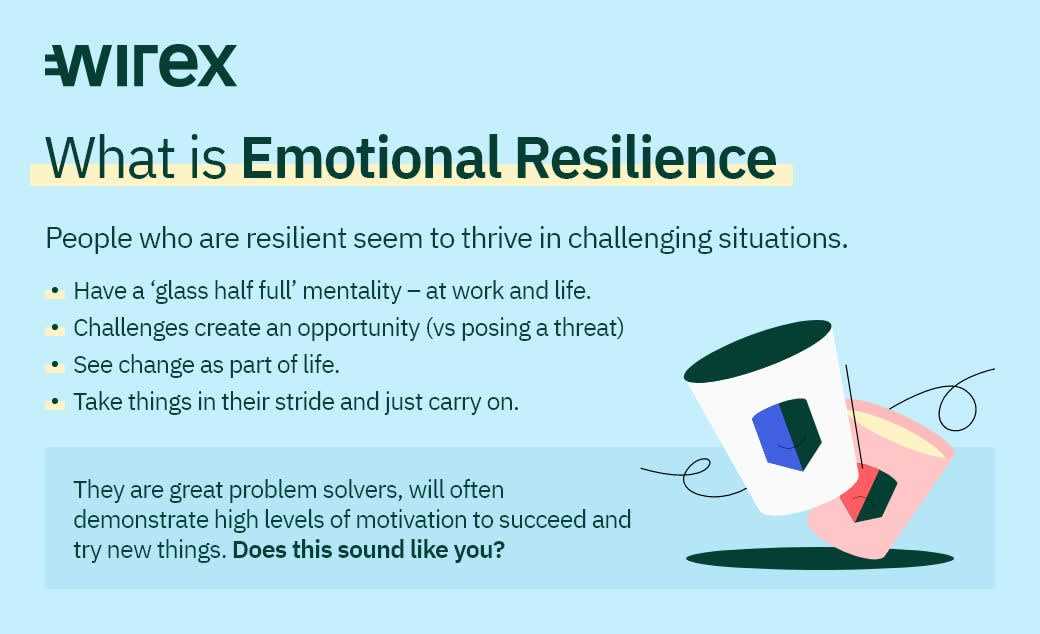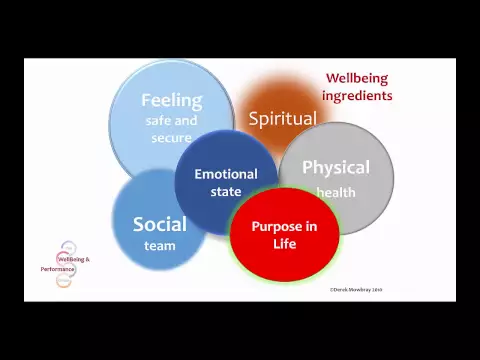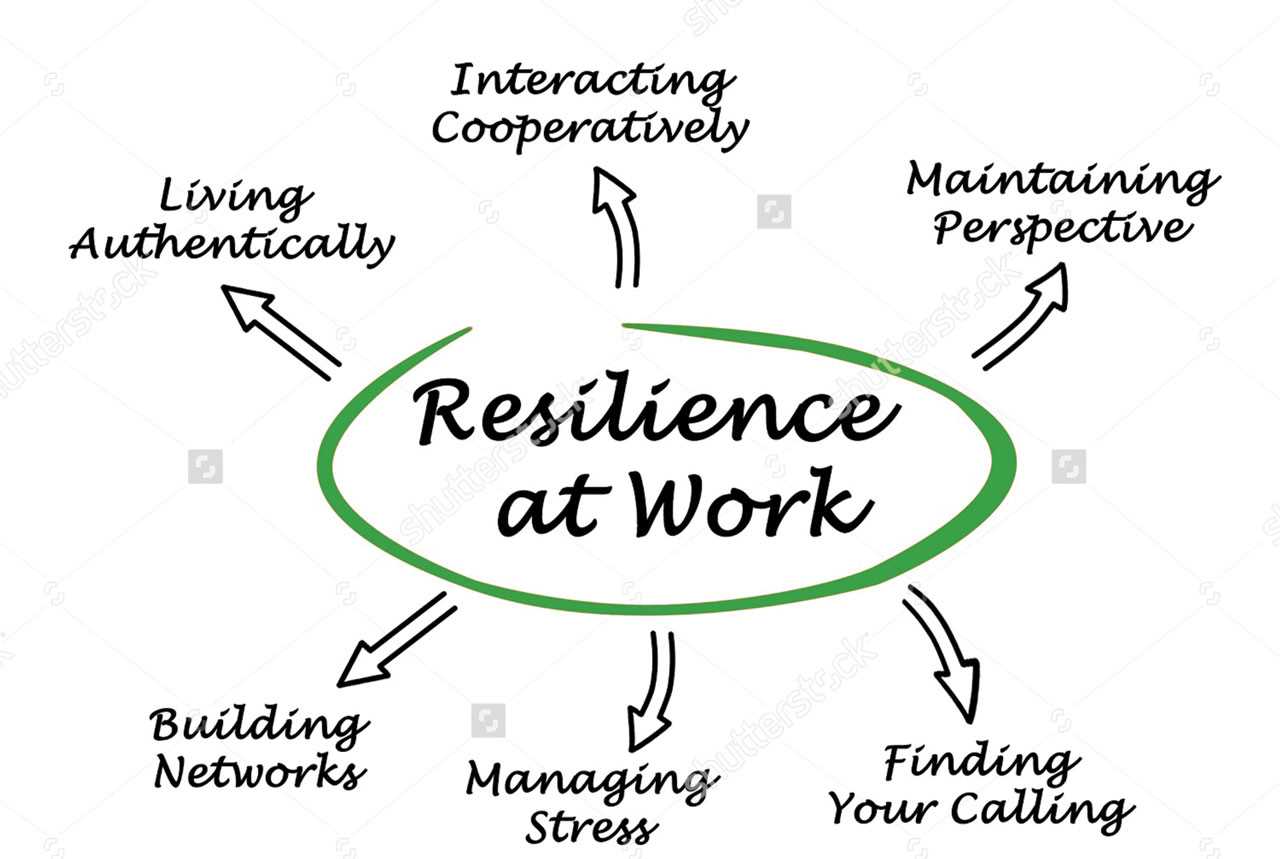
Job stress is a common challenge that many individuals face in their professional lives. The demands of the modern workplace can often lead to feelings of overwhelm, burnout, and decreased productivity. However, it is possible to build resilience and promote wellness in the face of job stress.
Resilience is the ability to bounce back from difficult situations and adapt to change. It involves developing a set of skills and strategies to effectively cope with stress and maintain a sense of well-being. Building resilience to job stress is essential for maintaining a healthy work-life balance and achieving long-term success.
One way to build resilience is by prioritizing self-care. Taking care of your physical and mental health is crucial for managing stress. This includes getting enough sleep, eating a balanced diet, and engaging in regular exercise. Additionally, practicing mindfulness and relaxation techniques, such as meditation or deep breathing exercises, can help reduce stress levels and promote a sense of calm.
Another important aspect of building resilience is cultivating a strong support system. Connecting with colleagues, friends, and family members who understand and empathize with your job stress can provide a valuable source of emotional support. It can also be helpful to seek out a mentor or coach who can provide guidance and help you develop strategies for coping with stress in the workplace.
Understanding Job Stress and Its Impact

In today’s fast-paced and competitive work environment, stress has become a common issue that affects employees in various industries. Job stress refers to the physical, mental, and emotional strain that individuals experience as a result of their work responsibilities and demands.
Building resilience to job stress is crucial for maintaining overall well-being and productivity in the workplace. Resilience is the ability to bounce back from challenges and adapt to changes, and it plays a vital role in managing and reducing the negative impact of stress.
Job stress can have a significant impact on both individuals and organizations. It can lead to decreased job satisfaction, increased absenteeism, and reduced productivity. Furthermore, chronic job stress can contribute to the development of various physical and mental health problems, such as cardiovascular diseases, anxiety, and depression.
Recognizing the signs and symptoms of job stress is essential for individuals to take proactive measures to cope with and mitigate its effects. Physical symptoms may include headaches, fatigue, and sleep disturbances, while psychological symptoms can manifest as irritability, difficulty concentrating, and feelings of overwhelm.
Employers also have a responsibility to create a work environment that supports employees’ well-being and helps them manage job stress. This can be achieved through initiatives such as providing stress management training, promoting work-life balance, and fostering a culture of open communication and support.
By understanding the causes and impact of job stress, individuals and organizations can take steps to build resilience and create a healthier and more productive work environment. Prioritizing well-being and implementing strategies to manage stress can lead to increased job satisfaction, improved mental health, and better overall performance.
Recognizing the Signs of Job Stress

Resilience at work is crucial for maintaining mental and physical well-being. However, job stress can often undermine our resilience and have a negative impact on our overall health. It is important to recognize the signs of job stress in order to take proactive steps in building resilience and managing stress effectively.
One of the key signs of job stress is a persistent feeling of being overwhelmed or unable to cope with work demands. This can manifest as difficulty concentrating, making decisions, or completing tasks. Physical symptoms such as headaches, fatigue, and sleep disturbances may also indicate job stress.
Another sign of job stress is a change in behavior or mood. This can include becoming irritable, impatient, or easily frustrated. Job stress may also lead to withdrawal from social interactions or increased conflict with colleagues. Additionally, job stress can impact personal relationships outside of work.
Job stress can also have a negative impact on our emotional well-being. Feeling anxious, depressed, or experiencing a sense of hopelessness are common signs of job stress. It is important to pay attention to these emotional changes and seek support when needed.
Recognizing the signs of job stress is the first step in building resilience and effectively managing stress at work. By acknowledging these signs, individuals can take proactive steps such as practicing self-care, setting boundaries, and seeking support from supervisors or mental health professionals. Building resilience to job stress is a continuous process that requires self-awareness and a commitment to maintaining well-being in the workplace.
Physical Symptoms of Job Stress

Job stress can have a significant impact on our physical well-being. The demands and pressures of work can often lead to a variety of physical symptoms, which can manifest in different ways. Recognizing and addressing these symptoms is crucial in building resilience and maintaining wellness in the workplace.
| Physical Symptoms | Description |
| Headaches | Frequent headaches or migraines can be a sign of job stress. The tension and pressure experienced at work can cause muscle tension and contribute to headaches. |
| Back pain | Prolonged sitting or standing, poor ergonomics, and stress-related muscle tension can lead to back pain. It is important to have proper posture and take breaks to stretch and move throughout the workday. |
| Insomnia | Job stress can often lead to difficulty falling asleep or staying asleep. Racing thoughts and worries about work can interfere with sleep patterns and result in insomnia. |
| Digestive issues | Stress can affect the digestive system, leading to symptoms such as stomachaches, indigestion, and changes in appetite. It is important to maintain a healthy diet and manage stress to alleviate these symptoms. |
| Fatigue | Feeling constantly tired and lacking energy can be a physical manifestation of job stress. Stress can disrupt sleep patterns and lead to chronic fatigue. |
| Increased heart rate | Stress can cause an increase in heart rate and blood pressure. This physiological response can have long-term effects on cardiovascular health if not managed effectively. |
| Muscle tension | Stress can cause muscle tension and tightness, particularly in the neck, shoulders, and jaw. This can lead to discomfort and pain if not addressed. |
It is important to pay attention to these physical symptoms and take proactive steps to manage job stress. Building resilience and prioritizing wellness at work can help alleviate these symptoms and promote overall well-being.
Emotional and Mental Symptoms of Job Stress

Job stress can have a significant impact on a person’s emotional and mental well-being. When individuals experience high levels of stress at work, it can lead to a range of emotional and mental symptoms that can affect their overall wellness and resilience.
Some common emotional symptoms of job stress include:
| – Feelings of anxiety and worry | – Irritability and mood swings |
| – Difficulty concentrating and making decisions | – Feeling overwhelmed and helpless |
| – Increased anger and frustration | – Lack of motivation and enthusiasm |
These emotional symptoms can make it challenging for individuals to effectively manage their work and personal life, leading to decreased productivity and satisfaction.
In addition to emotional symptoms, job stress can also have a significant impact on a person’s mental well-being. Some common mental symptoms of job stress include:
| – Persistent feelings of sadness and depression | – Decreased self-esteem and confidence |
| – Increased feelings of guilt and shame | – Difficulty sleeping and insomnia |
| – Racing thoughts and difficulty relaxing | – Loss of interest in activities and hobbies |
These mental symptoms can significantly impact a person’s overall well-being and quality of life. It is essential for individuals to recognize and address these symptoms to build resilience and promote wellness in the workplace.
By implementing strategies to manage job stress and promote emotional and mental well-being, individuals can build resilience and improve their overall wellness at work.
The Impact of Job Stress on Employee Performance

Job stress can have a significant impact on employee performance and overall well-being. When employees experience high levels of stress in the workplace, it can affect their ability to perform their job effectively and efficiently.
One of the main consequences of job stress is decreased productivity. When employees are stressed, they may have difficulty concentrating, making decisions, and completing tasks in a timely manner. This can result in lower quality work and missed deadlines, which can ultimately impact the success of a project or the overall performance of a team.
Job stress can also lead to decreased motivation and job satisfaction. When employees are constantly under stress, they may become disengaged from their work and lose interest in their job. This can result in decreased motivation to perform well and a decrease in job satisfaction, which can lead to higher turnover rates and a negative work environment.
In addition to the impact on performance, job stress can also have negative effects on employee health and well-being. High levels of stress can lead to physical and mental health issues, such as headaches, fatigue, anxiety, and depression. These health issues can further decrease employee performance and increase absenteeism, leading to additional challenges for both the employee and the organization.
Building resilience to job stress is crucial in order to mitigate these negative effects. Employers can support their employees by implementing wellness programs and providing resources for stress management, such as workshops, counseling services, and flexible work arrangements. Additionally, fostering a positive work environment, promoting work-life balance, and encouraging open communication can also help reduce job stress and improve employee performance and well-being.
In conclusion, job stress can have a significant impact on employee performance, motivation, and overall well-being. Recognizing the importance of building resilience and implementing strategies to manage job stress can help create a healthier and more productive work environment.
Decreased Productivity and Efficiency

Work-related stress can have a significant impact on productivity and efficiency in the workplace. When employees are experiencing high levels of stress, their ability to focus and concentrate on their tasks may be compromised. This can lead to decreased productivity and a decline in the quality of work being produced.
Stress can also affect decision-making abilities and problem-solving skills, making it more difficult for employees to effectively handle job-related challenges. They may struggle to come up with innovative solutions or make timely decisions, further hindering their productivity.
Furthermore, chronic stress can contribute to fatigue and burnout, which can result in increased absenteeism and presenteeism. Employees who are experiencing high levels of stress may feel overwhelmed and exhausted, making it difficult for them to perform at their best. This can lead to missed deadlines, errors, and a general decrease in overall efficiency.
Building a culture of wellness at work is essential for addressing these productivity and efficiency challenges. Employers can provide resources and support to help employees manage their stress levels, such as offering stress management workshops or providing access to mental health resources. Encouraging breaks and time off, promoting work-life balance, and fostering a supportive work environment can also contribute to improved productivity and efficiency.
It is important for both employers and employees to recognize the impact of stress on productivity and take proactive steps to address it. By prioritizing wellness and providing the necessary support, organizations can help their employees thrive and create a more productive and efficient work environment.
Increased Absenteeism and Turnover Rates

Building resilience and promoting wellness at work is crucial for addressing the challenges of job stress. When employees are unable to effectively cope with stress, it can lead to increased absenteeism and turnover rates.
Job stress can take a toll on employees’ mental and physical health, leading to higher rates of absenteeism. When employees are constantly overwhelmed and burnt out, they may need to take more sick days to recover or may even develop chronic health conditions. This can result in decreased productivity and increased costs for the organization.
Furthermore, high levels of job stress can also contribute to higher turnover rates. When employees feel overwhelmed and unsupported, they may seek employment elsewhere in search of a healthier work environment. This can lead to increased recruitment and training costs for the organization, as well as a loss of valuable talent and institutional knowledge.
By prioritizing the building of resilience and promoting wellness at work, organizations can help reduce absenteeism and turnover rates. Providing resources and support for employees to manage stress, such as employee assistance programs and wellness initiatives, can help employees better cope with job stress and improve their overall well-being.
Additionally, creating a positive work culture that values work-life balance, open communication, and employee recognition can also contribute to lower absenteeism and turnover rates. When employees feel valued and supported, they are more likely to stay with the organization and be motivated to perform at their best.
Overall, addressing job stress and promoting resilience and wellness at work is essential for reducing absenteeism and turnover rates. By investing in the well-being of employees, organizations can create a healthier and more productive work environment.
Negative Impact on Morale and Team Dynamics

The negative effects of job stress can have a significant impact on employee morale and team dynamics. When employees are overwhelmed by stress, their overall wellness and job satisfaction can suffer. This can lead to decreased motivation, increased absenteeism, and a decline in productivity.
Job stress can also create tension and conflict within teams. When individuals are experiencing high levels of stress, they may become more irritable and less patient with their colleagues. This can lead to strained relationships and decreased collaboration.
Additionally, job stress can create a negative work environment. When employees are constantly stressed and overwhelmed, it can create a tense and unhappy atmosphere. This can have a ripple effect on team dynamics, as the overall morale of the group may suffer.
Building resilience to job stress is crucial for maintaining positive morale and strong team dynamics. By providing employees with resources and support to manage their stress, organizations can create a healthier work environment. This can include offering stress management programs, promoting work-life balance, and fostering open communication.
Overall, the negative impact of job stress on morale and team dynamics highlights the importance of prioritizing wellness and building resilience in the workplace. By addressing stress and promoting employee well-being, organizations can create a positive and productive work environment.
Creating a Supportive Work Environment

A supportive work environment is essential for building resilience to job stress and promoting overall wellness at work. When employees feel supported and valued, they are better able to handle the challenges and pressures of their job.
Here are some ways to create a supportive work environment:
- Encourage open communication: Foster an environment where employees feel comfortable expressing their concerns, ideas, and feedback. This can be done through regular team meetings, one-on-one check-ins, and anonymous suggestion boxes.
- Promote work-life balance: Encourage employees to maintain a healthy work-life balance by offering flexible work arrangements, such as telecommuting or flexible hours. This allows employees to better manage their stress levels and prioritize their personal well-being.
- Provide resources for stress management: Offer resources and tools to help employees manage stress, such as workshops on stress reduction techniques, access to counseling services, and mindfulness training. These resources can empower employees to take control of their stress levels and build resilience.
- Recognize and reward achievements: Acknowledge and appreciate the hard work and accomplishments of employees. This can be done through verbal recognition, employee of the month programs, or performance-based incentives. Recognizing achievements boosts morale and creates a positive work environment.
- Encourage teamwork and collaboration: Foster a sense of teamwork and collaboration by promoting cross-functional projects, team-building activities, and opportunities for employees to work together towards common goals. Teamwork can provide support and help alleviate stress by sharing responsibilities and problem-solving together.
By creating a supportive work environment, employers can help their employees build resilience to job stress and promote overall wellness. This leads to a happier and more productive workforce.
Promoting Work-Life Balance

Resilience and wellness in the workplace are closely tied to achieving a healthy work-life balance. Building resilience to job stress requires individuals to prioritize their well-being and take steps to ensure a harmonious integration of work and personal life.
Here are some strategies to promote work-life balance:
- Set boundaries: Clearly define your working hours and communicate them to your colleagues. Avoid checking emails or taking work-related calls outside of these designated times.
- Take breaks: Schedule regular breaks throughout the day to recharge and relax. Use this time to engage in activities that help you unwind and rejuvenate.
- Manage time effectively: Prioritize your tasks and allocate time for both work and personal activities. Avoid overcommitting yourself and learn to delegate tasks when necessary.
- Establish a support system: Surround yourself with supportive colleagues, friends, and family who understand the importance of work-life balance. Seek their guidance and encouragement when needed.
- Practice self-care: Engage in activities that promote physical and mental well-being, such as exercise, meditation, hobbies, and spending quality time with loved ones.
- Unplug from technology: Create designated technology-free zones or time periods to disconnect from work-related emails, messages, and notifications. Use this time to focus on personal activities and relationships.
- Set realistic goals: Avoid setting unrealistic expectations for yourself. Set achievable goals that align with your values and priorities.
- Seek flexibility: Explore options for flexible work arrangements, such as remote work, flexible hours, or compressed workweeks. This can help create a better balance between work and personal life.
- Practice mindfulness: Be present in the moment and cultivate awareness of your thoughts, emotions, and physical sensations. Mindfulness can help reduce stress and improve overall well-being.
- Regularly evaluate and adjust: Reflect on your work-life balance regularly and make necessary adjustments. Priorities may shift over time, and it’s important to reassess and adapt accordingly.
By implementing these strategies, individuals can promote work-life balance, enhance their resilience to job stress, and achieve overall wellness in the workplace.
Flexible Scheduling and Remote Work Options

Flexible scheduling and remote work options can play a crucial role in building resilience to job stress and promoting overall wellness in the workplace. By allowing employees to have more control over when and where they work, organizations can help reduce stress levels and increase job satisfaction.
Flexible scheduling allows employees to have more freedom in determining their work hours. This can be particularly beneficial for individuals who have personal commitments or responsibilities outside of work. By giving employees the ability to adjust their schedules to accommodate these obligations, organizations can help reduce stress and create a healthier work-life balance.
Remote work options, on the other hand, provide employees with the flexibility to work from outside the traditional office setting. This can be especially advantageous for individuals who have long commutes or who prefer to work in a different environment. Remote work allows employees to avoid the stress associated with commuting and can also increase productivity by eliminating distractions commonly found in the office.
Both flexible scheduling and remote work options require trust and effective communication between employers and employees. It is important for organizations to establish clear guidelines and expectations to ensure that work is being completed effectively and efficiently. Regular check-ins and open lines of communication can help foster a sense of trust and accountability.
Overall, offering flexible scheduling and remote work options can contribute to the building of resilience to job stress and promote wellness in the workplace. By giving employees more control over their work schedules and environments, organizations can create a healthier and more productive workforce.

I am Patrina de Silva, a psychologist and mental health blogger in Sri Lanka. After obtaining psychology degrees from the University of Colombo and Monash University, I returned home to work as a counselor while also starting the popular blog “Pressy but Happy” to provide advice on psychological issues. Over the past decade, my empathetic articles have made my blog a leading mental health resource in the country. In addition to writing, I maintain a private therapy practice, frequently volunteer counseling time, and conduct seminars, driven by my passion for destigmatizing mental illness and educating the public on the mind-body connection. I strive to be an influential voice in my field through my compassionate approach.
